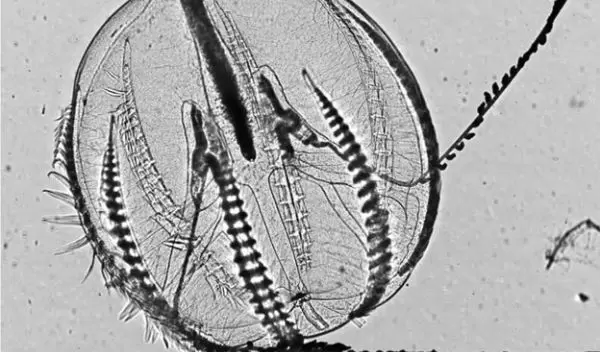
To push or to pull? How many-limbed ocean organisms swim
When you think of swimming, you probably imagine pushing through the water -- creating backward thrust that propels you forward. New research at the Marine Biological Laboratory suggests that many marine animals actually pull themselves through the water, a phenomenon dubbed "suction thrust."
The U.S. National Science Foundation-funded study, published in Scientific Reports, found that small marine animals with multiple propulsers -- including larval crabs, polychaete worms and some types of jellyfish -- don't push themselves forward when they move their appendages but instead create negative pressure that pulls them through the water.
When the front appendage moves, it creates a pocket of low pressure that may reduce the energy required by the next limb to move. "It is similar to how cyclists use draft to reduce wind drag and to help pull the group along," says lead author Sean Colin of Roger Williams University.
The research builds on the team’s previous work on suction thrust in lampreys and jellyfish. For the current study, the scientists focused on small marine animals that use metachronal kinematics, also known as "metachronal swimming," a locomotion technique commonly used by animals with multiple pairs of legs in which appendages stroke in sequence, rather than synchronously.
For this study, the researchers worked with two crab species, a polychaete worm and four species of comb jellies. All are smaller than a few millimeters in length. The biologists found that the fluid flow created while swimming was the same as in the larger animals they had previously studied.
"Even at these really small scales, these animals rely on negative pressure to pull themselves forward through the water," says Colin, who added that this could be a common phenomenon among animals.
"It's not unique to the fish or the jellyfish we looked at; it's probably much more widespread in the animal kingdom," says Colin, who added that something like suction thrust has been observed in birds and bats. These creatures have the same degree of bend in their limbs (25-30 degrees) as the marine animals.


